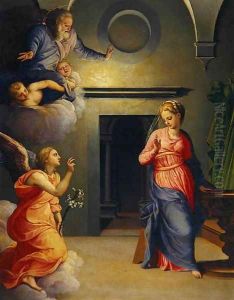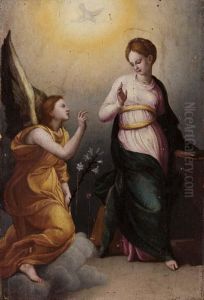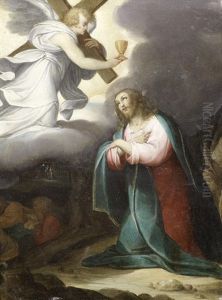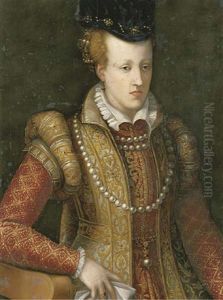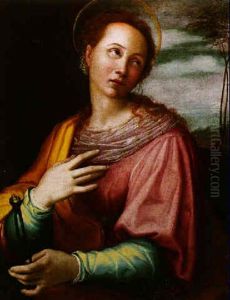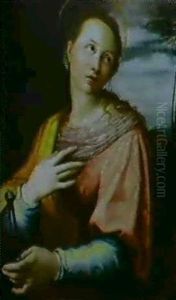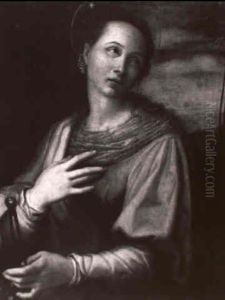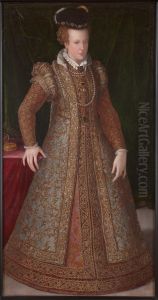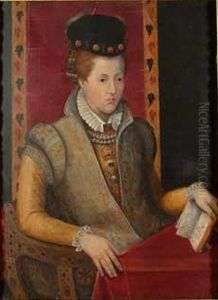Giovanni Bizzelli Paintings
Giovanni Bizzelli was an Italian painter of the Mannerist period, born in 1556 in Florence, Italy. He was a student of the prominent Florentine artist Santi di Tito, who was a leading figure in the counter-Mannerist movement, which aimed to blend the High Renaissance style of naturalism with the more artificial and elongated style of Mannerism.
Bizzelli's artistic career was largely based in his hometown of Florence, where he contributed to the vibrant art scene of the late 16th and early 17th centuries. His style was characterized by the use of vivid colors, dramatic compositions, and a finesse in drawing, reflecting the influence of his teacher as well as other Mannerist painters. Despite being less known than some of his contemporaries, Bizzelli's works display a solid command of the Mannerist idiom, and he was capable of producing work that was both expressive and decoratively pleasing.
Some of his notable works include frescoes in the cloister of the Basilica della Santissima Annunziata in Florence and in the chapel of the Palazzo Nonfinito. He also painted altarpieces for various churches in Tuscany, displaying his skill in religious iconography.
Giovanni Bizzelli's contribution to art was not limited to his paintings. He also took on pupils and was instrumental in the transmission of the Mannerist style to the next generation of artists. His works can still be seen in situ in various buildings in Florence and in museum collections, where they continue to be studied and appreciated for their historical and artistic value.
Bizzelli's life was relatively short, and he died in 1612 in Florence. Though he did not achieve the lasting fame of some of his peers, his work remains an important example of late Mannerist art in Florence. His paintings reflect the transitional period in which he lived, a time when the exuberance of Mannerism was giving way to the more sober and realistic Baroque style that would dominate the 17th century.
